Ancient Legends of the Reptilian Alien Gods: Ancient Sumer

There were many different and unique cultures since, and possibly before man kinds inception in the middle east that have origins and mythos that molded their society and culture that embraced around some form of reptilian-like gods.
Only a handful of them were truly emersed into the existence of reptilian gods or beings and describe them and their actions with mankind in colorful and inciteful detail. (See Video at the Bottom)
Sumer was one of the ancient civilizations and historical regions in southern Mesopotamia, modern-day southern Iraq, during the Chalcolithic and the Early Bronze ages.
Although the earliest specimens of writing in the region do not go back much further than c. 2500 BC, modern historians have suggested that Sumer was first permanently settled between c. 5500 and 4000 BC by a non-Semitic people who spoke the Sumerian language.
It is commonly taught that the Sumerians were a single settlement of people who shared the same customs and culture. The Sumerians were actually several different but similar settlements and cultures within Sumer during a period of time within Persia.
Although they are singularly grouped together, practices, beliefs and culture differed from settlement to settlement over time.
The term “Sumerian” is the common name given to the ancient non-Semitic inhabitants of Mesopotamia, Sumer, by the Semitic Akkadians. The Sumerians referred to themselves as ou sag giga, literally meaning “the black-headed people”, and to their land as ki-en-gi, meaning “place of the noble lords”.
The Akkadian word Shumer may represent the geographical name in dialect, but the phonological development leading to the Akkadian term sumeru is uncertain.
The five “first” cities said to have exercised pre-dynastic kingship:
Eridu
Bad-tibira
Larsa
Sippar
Shuruppak
The Sumerian city-states rose to power during the prehistoric Ubaid and Uruk periods.
Sumerian written history reaches back to the 27th century BC and before, but the historical record remains obscure until the Early Dynastic III period, the 23rd century BC, when a now deciphered syllabal writing system was developed, which has allowed archaeologists to read contemporary records and inscriptions.
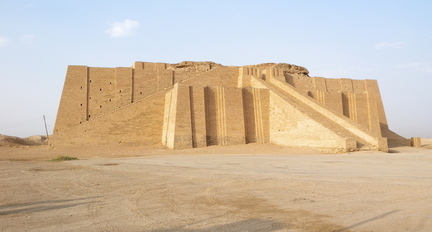
Classical Sumer ends with the rise of the Akkadian Empire in the 23rd century BC. Following the Gutian period, there is a brief Sumerian Renaissance in the 21st century BC, cut short in the 20th century BC by Semitic Amorite invasions.
The Amorite “dynasty of Isin” persisted until 1700 BC, when Mesopotamia was united under Babylonian rule. The Sumerians were eventually absorbed into the Akkadian (Assyro-Babylonian) population.
The earliest known sumerian civilization existed 7,000 to 8,500 years ago, much of Mesopotamia shared a common culture, called Ubaid after the site where evidence for it was first found.
Characterized by a distinctive type of pottery, this culture originated on the flat alluvial plains of southern Mesopotamia around 6200 B.C. Indeed, it was during this period that the first identifiable villages developed in the region, where people farmed the land using irrigation and fished the rivers and sea.
Thick layers of alluvial silt deposited every spring by the flooding rivers cover many of these sites. Some villages began to develop into towns and became focused on monumental buildings, such as Eridu and Uruk.
The Ubaid culture spread north across Mesopotamia, gradually replacing the Halaf culture. Ubaid pottery is also found to the south, along the west coast of the Persian Gulf, perhaps transported there by fishing expeditions.
Baked clay figurines, mainly female, and lizardlike heads, have been found at a number of Ubaid sites.
In the early Ubaid period, little writings were found that would give insight into the details of this culture. Only pottery and passed on oral traditions of this settlement written about around 3 to 4 thousand years later.
What is evident of the Ubaid culture is that it was deeply vested in reptilian-like humanoids as many of the clay figurines and other depictions have been found in excivations.
From the clay figurines one gathers that the humanoids they were expressing were important, powerful, spiritual, and possibly existed as portrayed.
Clay reptilian or praying mantus style masks have been recovered leading to conclude that the Ubaid people were trying to mimic some other being that they had eigther a high respect or a symbolic reference to, or possibly fear for these unusual entities.
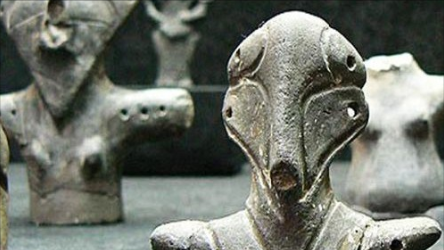
Sumerian myths were passed down through the oral tradition until the invention of writing. Early Sumerian cuneiform was used primarily as a record-keeping tool; it was not until the late early dynastic period that religious writings first became prevalent as temple praise hymns and as a form of “incantation” called the nam-šub (prefix + “to cast”).
In the Sumerian city-states, temple complexes originally were small, elevated one-room structures. In the early dynastic period, temples developed raised terraces and multiple rooms. Toward the end of the Sumerian civilization, Ziggurats became the preferred temple structure for Mesopotamian religious centers. Temples served as cultural, religious, and political headquarters until approximately 2500 BCE, with the rise of military kings known as Lu-gals, or Big Man, after which time the political and military leadership was often housed in separate “palace” complexes.
Until the advent of the lugals, Sumerian city states were under a virtually theocratic government controlled by various En or Ensí, who served as the high priests of the cults of the city gods. Their female equivalents were known as Nin.Priests were responsible for continuing the cultural and religious traditions of their city-state, and were viewed as mediators between humans and the cosmic and terrestrial forces.
The Sumerians envisioned the universe as a closed dome surrounded by a primordial saltwater sea. Underneath the terrestrial earth, which formed the base of the dome, existed an underworld and a freshwater ocean called the Apsu. The deity of the dome-shaped firmament was named An; the earth was named Ki. First the underground world was believed to be an extension of the goddess Ki, but later developed into the concept of Kigal. The primordial saltwater sea was named Nammu, who became known as Tiamat during and after the Sumerian Renaissance.
The earliest historical records of Sumer do not go back much further than 2900 BC. The earliest Sumerian literature of the 3rd millennium BC identifies four primary deities; Anu, Enlil, Ninhursag and Enki. The highest order of these earliest gods were described occasionally behaving mischievously towards each other, but were generally involved in co-operative creative order.
The most important archaeological discoveries in Sumer were a large number of tablets written in cuneiform. Sumerian writing, while proven to be not the oldest example of writing on earth, is considered to be a great milestone in the development of man’s ability to not only create historical records but also in creating pieces of literature both in the form of poetic epics and stories as well as prayers and laws.
A large body of hundreds of thousands of texts in the Sumerian language have survived, such as personal or business letters, receipts, lexical lists, laws, hymns, prayers, stories, daily records, and even libraries full of clay tablets. Monumental inscriptions and texts on different objects like statues or bricks are also very common. Many texts survive in multiple copies because they were repeatedly transcribed by scribes-in-training.
It is written in these tablets several creation stories that have many similarities of Genesis stories throughout time to present.
It is here where the first oral traditions of the early Ubaid people were written into record. One can not assume that these oral traditions are precise and intactly written thousands of years later, but it is generally accepted that they are at least similar to the original oral legends.
The most notable texts uncovered is called the Enuma Elis, which has about a thousand lines and is recorded in Old Babylonian on seven clay tablets, each holding between 115 and 170 lines of Sumero-Akkadian cuneiform script. Most of Tablet V has never been recovered but, aside from this lacuna, the text is almost complete. A duplicate copy of Tablet V has been found in Sultantepe, ancient Huzirina, near the modern town of Sanliurfa in Turkey.
In the enummer elish, which details the history of “ancient ones”, pre-earth history and the creation of the human race.
When the seven tablets that contain this were first discovered, evidence indicated that it was used as a “ritual”, meaning it was recited during a ceremony or celebration. That celebration is now thought to be the Akitu festival, or Babylonian new year. This tells of the creation of the world, and of Marduk’s victory over Tiamat, and how it relates to him becoming king of the gods. This is then followed by an invocation to Marduk by his fifty names.
The title, meaning “when on high”, is the incept. The first tablet begins:
When the sky above was not named,And the earth beneath did not yet bear a name,And the primeval Apsu, who begat them, And chaos, Tiamat, the mother of them both, Their waters were mingled together,And no field was formed, no marsh was to be seen;When of the gods none had been called into being.
It was Zecharia Sitchin who was one of the few scholars able to read and interpret ancient Sumerian and Akkadian clay tablets. He was privy to the thousands of clay tablets confiscated by the United Kingdom to decipher.
There are arguments within the archelogical communities about an ancient civilization before and co-existed with Sumer, there is some evidence of this within the writings of the Summarians, but it is steeped with mystery and cloaked with theology as the Ancient Ones, and the Annunaki.
According to Sitchin’s interpretation of Mesopotamian iconography and symbolism, outlined in his 1976 book The 12th Planet and its sequels, there is an undiscovered planet beyond Neptune that follows a long, elliptical orbit, reaching the inner solar system roughly every 3,600 years.

This planet is called Nibiru (although Jupiter was the planet associated with the god Marduk in Babylonian cosmology). According to Sitchin, Nibiru (whose name was replaced with MARDUK in original legends by the Babylonian ruler of the same name in an attempt to co-opt the creation for himself, and collided catastrophically with Tiamat, which he considers to be another planet once located between Mars and Jupiter. This collision supposedly formed the planet Earth, the asteroid belt, and the comets. Sitchin states that when struck by one of planet Nibiru’s moons, Tiamat split in two, and then on a second pass Nibiru itself struck the broken fragments and one half of Tiamat became the asteroid belt. The second half, struck again by one of Nibiru’s moons, was pushed into a new orbit and became today’s planet Earth.
It was Sitchin’s intreptation that some of these gods named were not just mere anthrapormorphized natural phenomena occuring here on earth, but were actually physical celestial bodies in space, and that technologically advanced humanoids called the annunaki visited earth and created mankind.
Nibiru was the home of a technologically advanced human-like extraterrestrial race called the Anunnaki in Sumerian myth, who Sitchin states are called the Nephilim in Genesis. He wrote that they evolved after Nibiru entered the solar system and first arrived on Earth possibly 450,000 years ago, looking for minerals, especially gold, which they found and mined in Africa. Sitchin states that these “gods” were the rank-and-file workers of the colonial expedition to Earth from planet Nibiru.
Sitchin wrote that Enki suggested that to relieve the Anunnaki, who had mutinied over their dissatisfaction with their working conditions, that primitive workers, Homo sapiens, be created by genetic engineering as slaves to replace them in the gold mines by crossing extraterrestrial genes with those of Homo erectus, called the Adamu. According to Sitchin, ancient inscriptions report that the human civilization in Sumer, Mesopotamia, was set up under the guidance of these “gods”, and human kingship was inaugurated to provide intermediaries between mankind and the Anunnaki (creating the “divine right of kings” doctrine). Sitchin believes that fallout from nuclear weapons, used during a war between factions of the extraterrestrials, is the “evil wind” described in the Lament for Ur that destroyed Ur around 2000 BC.
In the transcribed tablets, there is also a mention of the ancient ones, though not much is mentioned about them other than they existed before the Annunaki also called elder gods.
Although it does describe the Anunnaki were terrified of the Ancient Ones and dreaded their foretold return, fearing that they would reclaim the earth and take revenge on them. For this reason they devised many “magical” and other occult diverse means to prevent this from occurring, according to other sources.
The Anunnaki demonstrate their fear and hatred of the Ancient Ones, by describing them as “crawling chaos” and blaming them for all manner of hideous horror. But the tablets also reveal the Anunnaki themselves, as a fierce, lustful, incestuous, bloodthirsty, deceitful, jealous and conquering race, with a vested interest in keeping their “creations” ignorant about their true origins.
The sumarian texts also reveal that”Man is born of sadness, for he is of the Blood of the Ancient Ones, but has the Spirit of the Elder Gods breathed into him. And his heart goes to the Ancient Ones, but his mind is turned towards the Elder Gods, and this is the war which shall be always fought, unto the last generation of man; for the world is unnatural.”
This can be intereprated as humans having the intelligence and selfawareness of the Annunaki, but possess a heart or eternal soul of the Ancient ones.
Interestingly, in 1967 a woman named Betty Andreasson claims she was abducted by small grey aliens from her home on several occasions. They preformed tests and examinations of her. On one occasion she says she say tall praying matis like aliens. The aliens comminucated through telapathy. On another occasion, she asked mentally a question of why? They answered her telling Betty that they are studying humans and have been for a long time, and they want to know what is and why we possess an eternal soul.
This abduction case is deemed highly credible as Betty has had serveral phyciological exams, passed lie dector tests and under gone hypnosis to reveal the truth. Also this abduction was one of the first detailed report of its kind in the 20th century.
Were the Annunaki advanced extraterrestrial shapeshifting humanoids from another world that shaped the preademic man, ultimately giving us their intelligence for their own adgenda?
Were the Annunaki reptilian shapshifters a “snake in the garden” tempting us with knowledge, and once recieved there is no going back to a simpler existence of ignorant bliss.
Were the ancient ones, the ones before the Annunaki, a mention to a ONE GOD system that organized different actions of; into multipule dieties since it is reffered to in the plural?
Could it really be Ancient One?

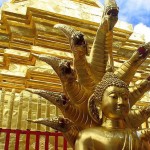

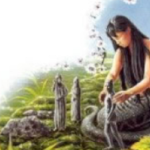
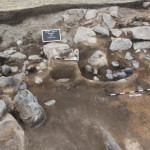



Pingback: Nimrod and the ‘Gate of God’ | Cmoneyspinner Keeps on Blogging()